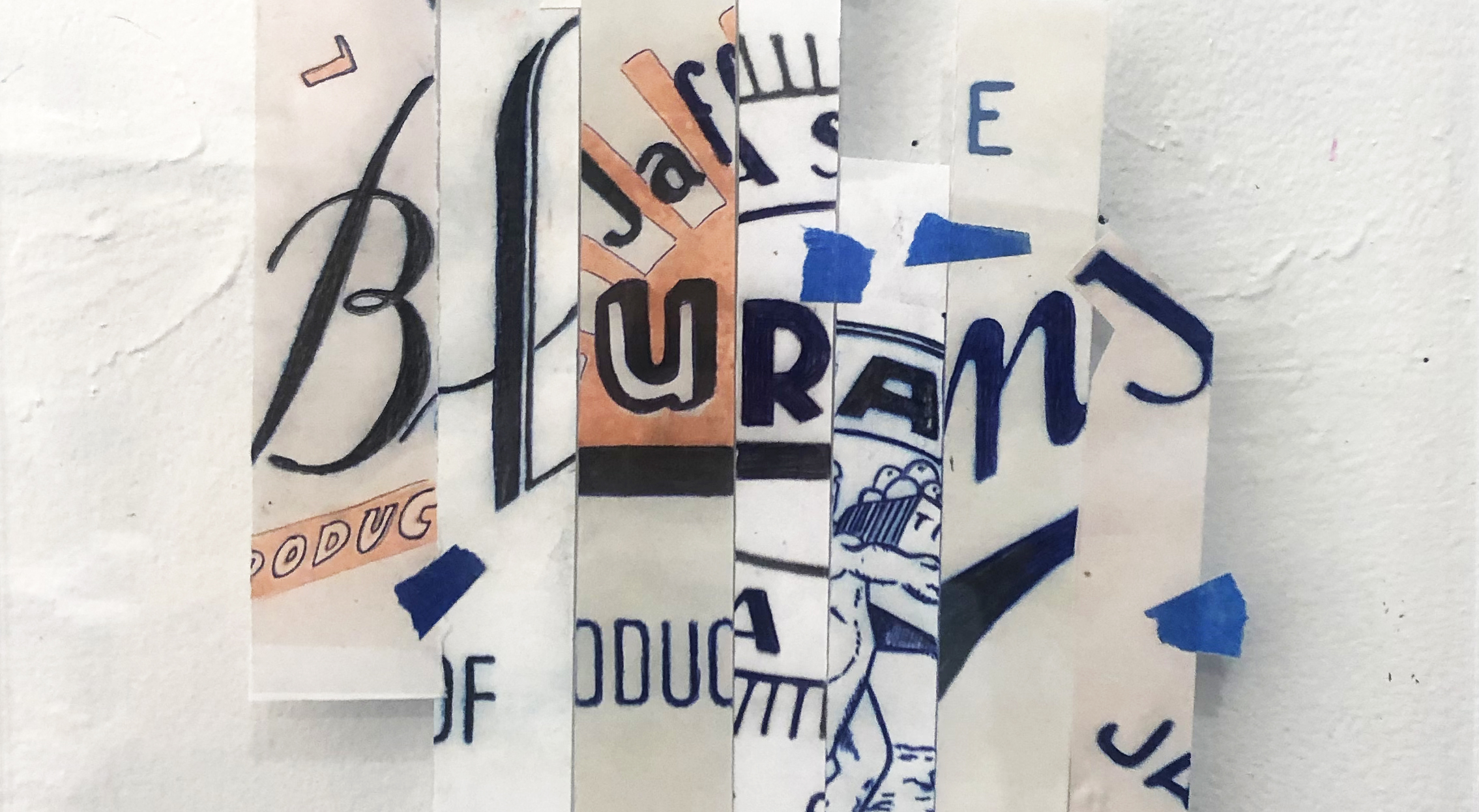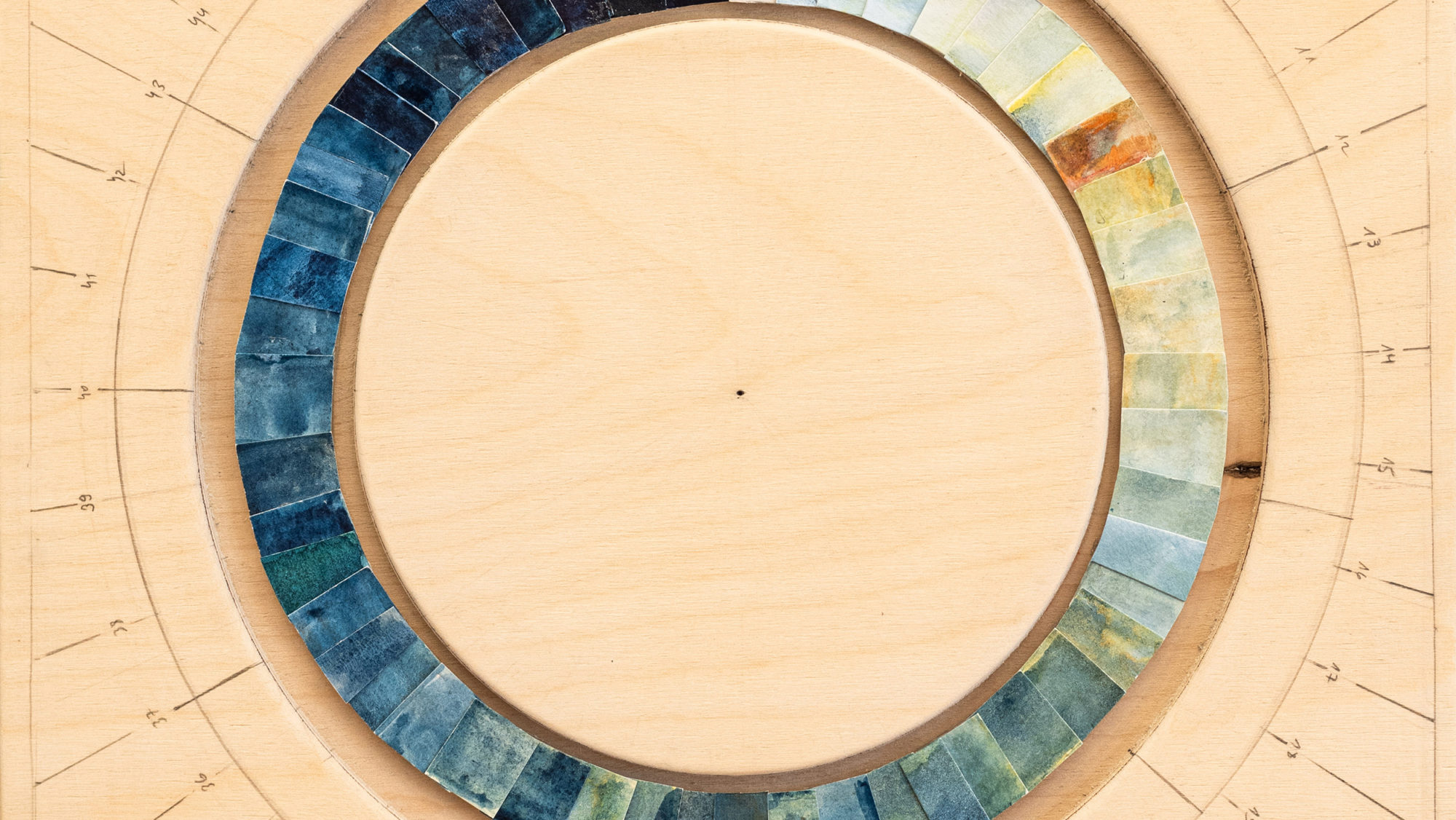
Tristeza I
Installation, works on paper, orange peels and ink. 2021
I spent the transformative year of 2020 in Israel. There, I developed a body of work, Tristeza, named after the Tristeza Virus—a plant-based disease which has caused millions of citrus trees worldwide to die over the past 100 years. The name Tristeza, which means sadness in Spanish and Portuguese, was coined in the 1930s by a Brazilian farmer who helplessly watched the trees in his orchard gradually decline. Tristeza is an ongoing project of my most recent research, including a film, outlining a conceptual inquiry that encapsulates my desire to create a blue orange tree, Bluranj, as a way to stimulate and represent a deeper conversation on this fruit’s iconic and charged representation within Palestinian/ Israeli culture and society.
In 2017, I began my research on the popular Israeli Jaffa orange brand where I explored the duality of the orange symbol, inherent within Israel-Palestine culture and identity. In the early 19th century, the orange industry in this region was lucrative. Yet, within this economic trading, the orange quickly became affiliated and recognized as the ultimate Zionist symbol that signified working the land, as well as technological progress. As a result, Jaffa oranges became one of the quintessential symbols of the State of Israel, whilst also the emblem of the lost Arab-Palestinian land, a signification that has been erased entirely from the Israeli collective narrative.
I expanded my research on transgenic plant engineering by working with scientists at the Volcani Agriculture Institute in the department for Enhanced Citrus Species. My goal was to change the DNA of the orange and reverse the color of the fruit into blue, promoting the creation of a new species, a hybrid, a mutation of Blue and Orange. Altering one of the most distinct symbols of this land and inventing a new strain, conceptually suggests a poetic read on the continuous conflict of identity politics in both nations.
The concept of this metamorphosis of the oranges can also be seen as a metaphor for what we experienced during the pandemic. Around the time in which the Tristeza virus first appeared, in 1929, the surrealist poet Paul Éluard published his poem The Earth Is Blue as An Orange. This coincidence greatly resonated with me while I embarked on this project. I found an organic link between the metaphor of the blue orange to last year’s pandemic. The accelerated shift occurring on a planetary level, where the familiar transformed and became alienated, seemed to find a correspondence with the shift of color of the orange.
Bluranj is a name I coined for the new species. It is a portmanteau of blue and orange, with the addition of the letter “J” to mark the Sanskrit origin of the “orange” name—‘naranj’. It takes five years to create a new citrus species, which is said to be the time it takes people to acclimatize to a new environment. It might be also the time necessary for the surreal bluranj trees to become real. This project is ongoing, until I set the roots of Bluranj trees, to offer a new view in the landscape where they will be planted.
—Keren Benbenisty
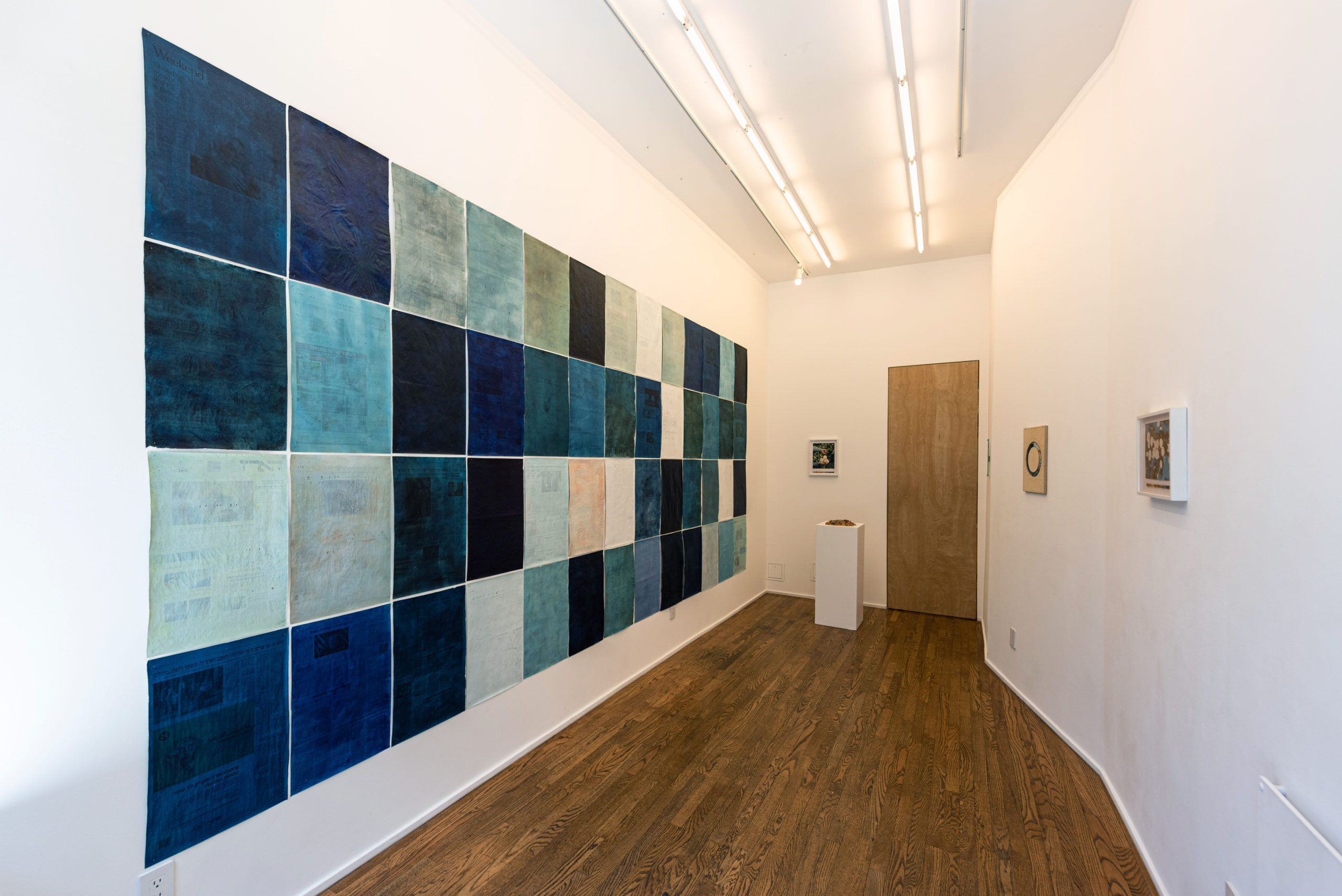
Ulterior Gallery, New York, NY
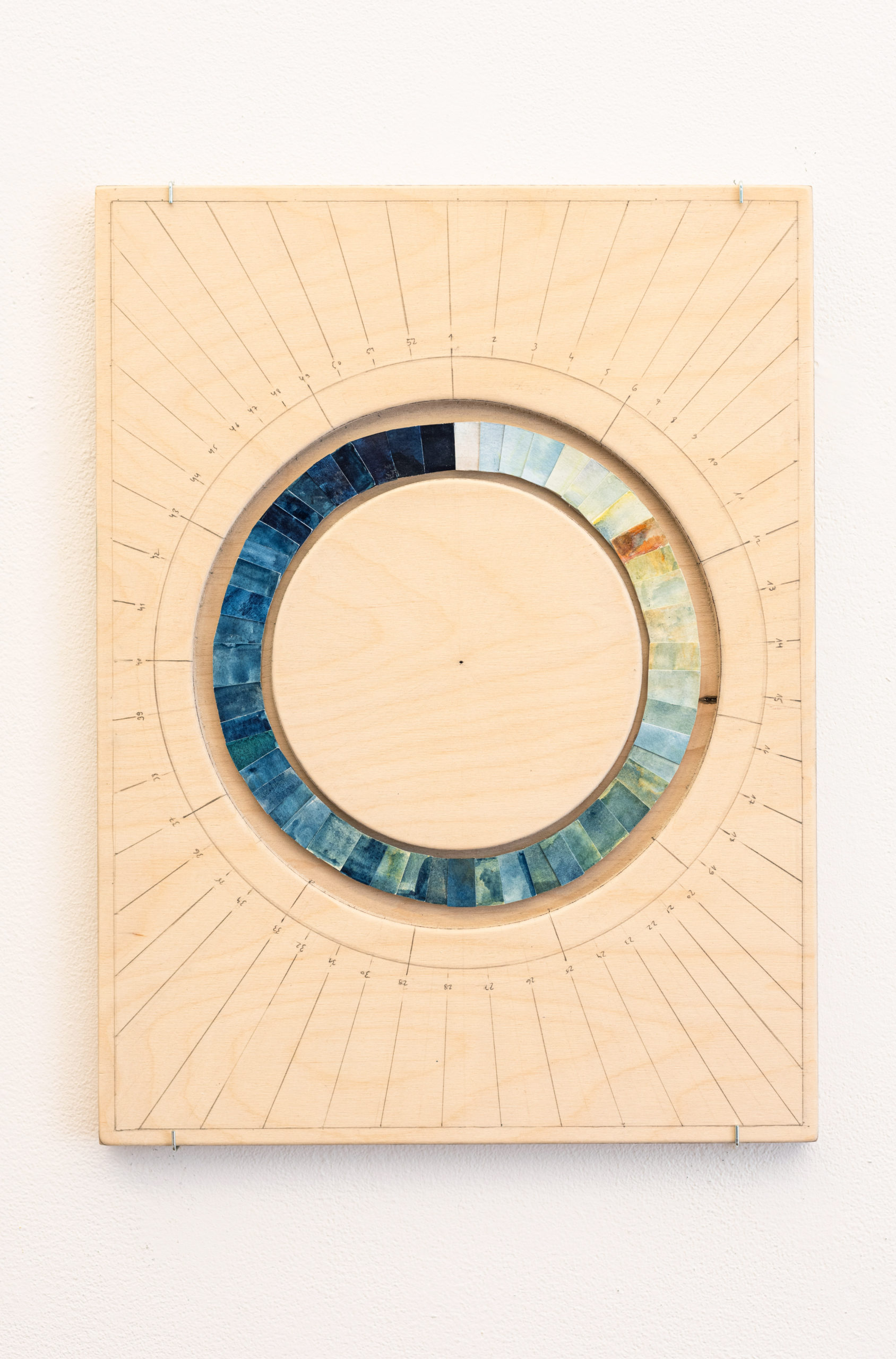
Tristeza, 2020. Wood, paper, ink and pencil. 15 3/4 x 11 3/4 in. / 30 x 40 cm.
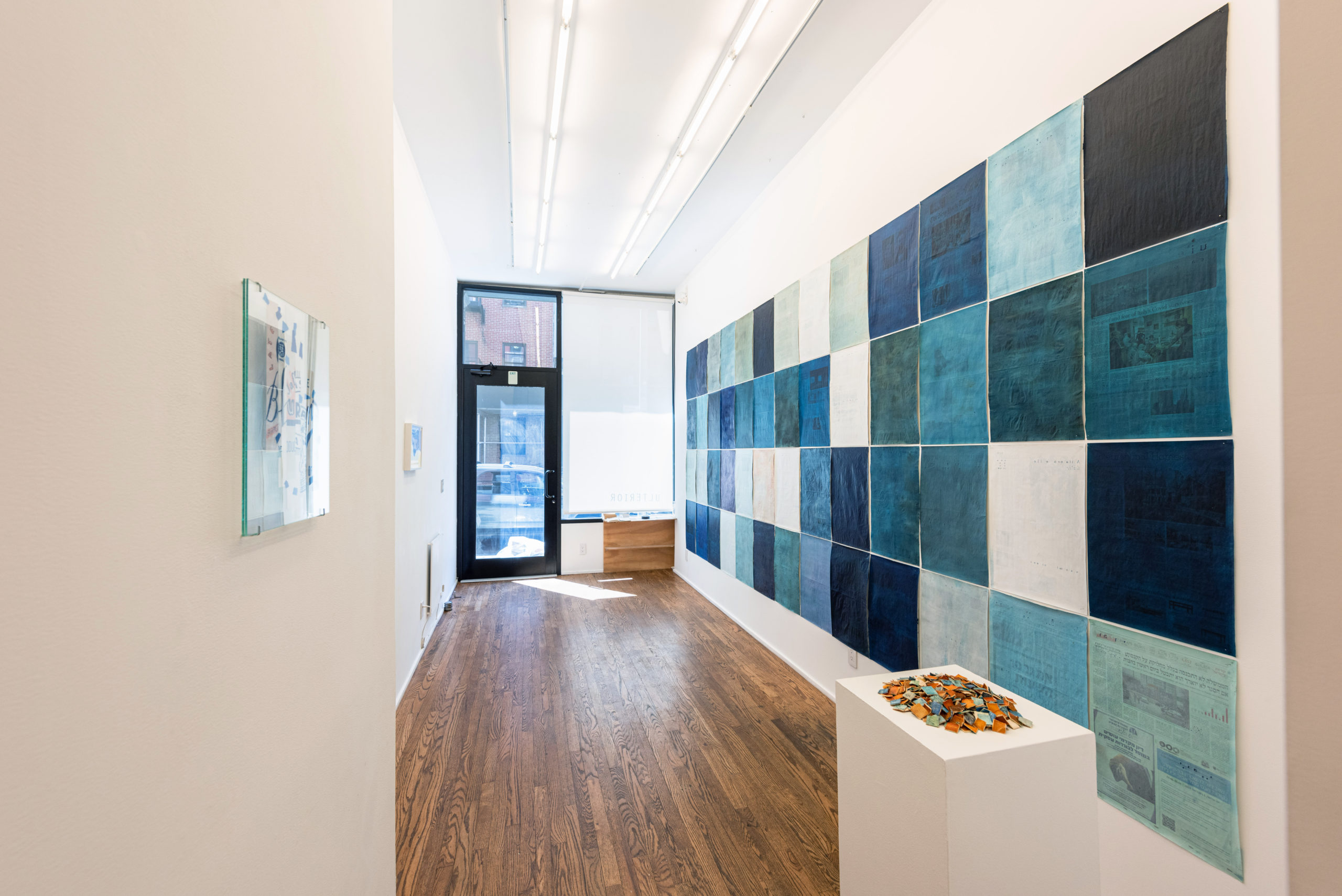
Ulterior Gallery, New York, NY
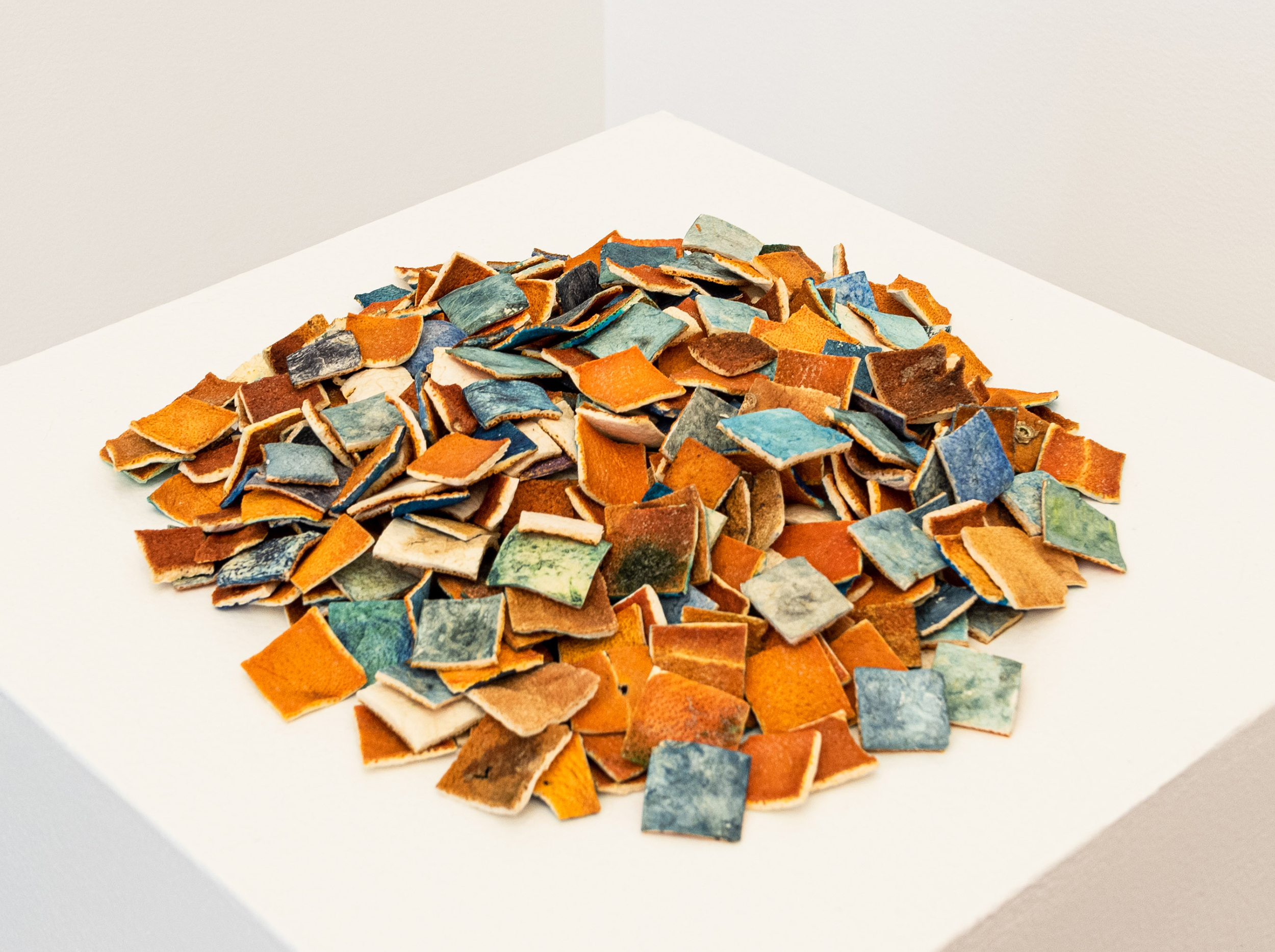
365 Days in Jaffa, 2020/21. 365 Orange peels, ink. Variable dimension.
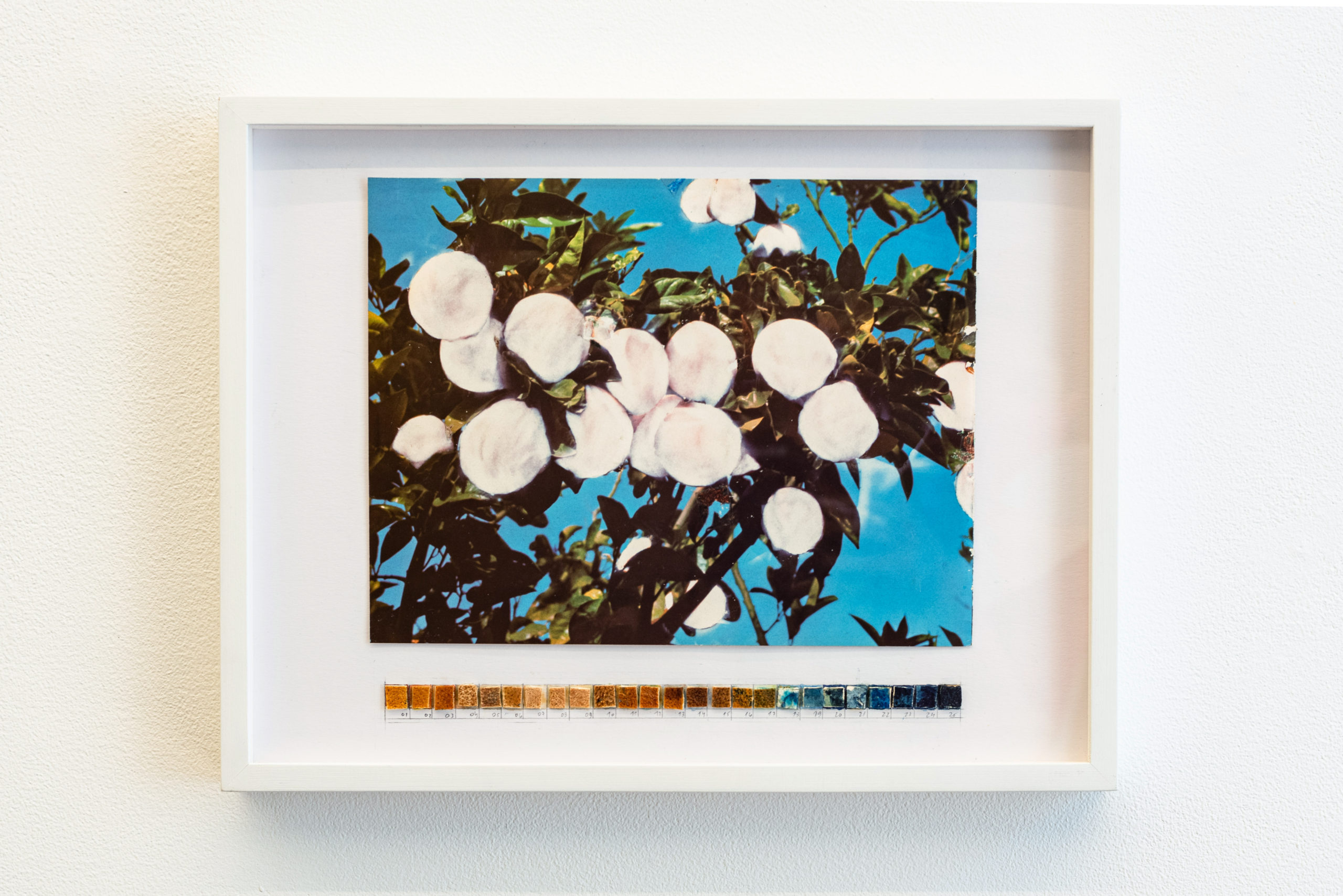
Untitled, 2021. An erased page from a vintage book, orange peels and ink. 11.3/4 x 15 1/4 in. / 30 x 39 cm.
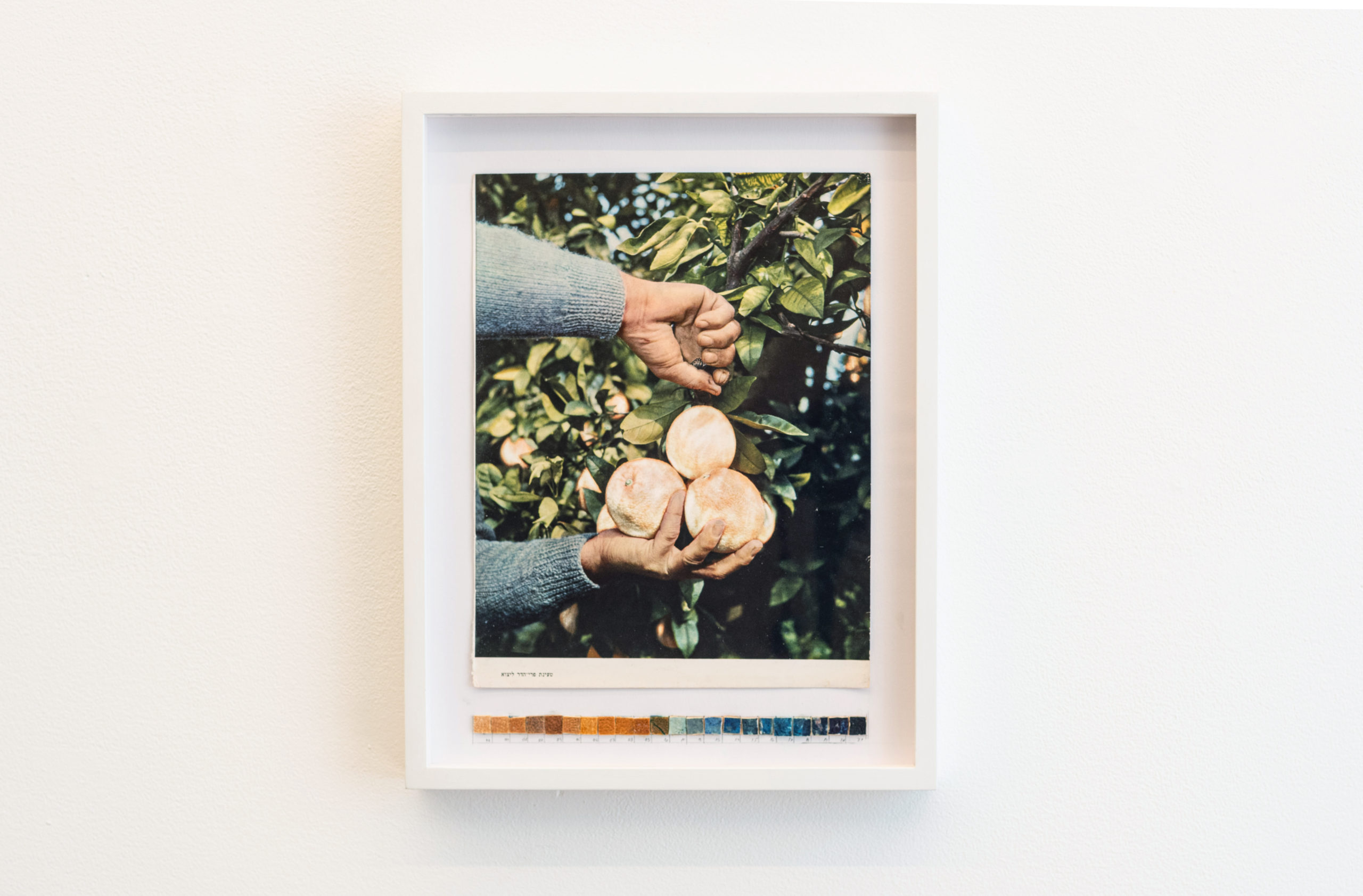
Untitled, 2021. An erased page from a vintage book, orange peels and ink. 11 3/4 x 15 1/4 in. / 30 x 39 cm.
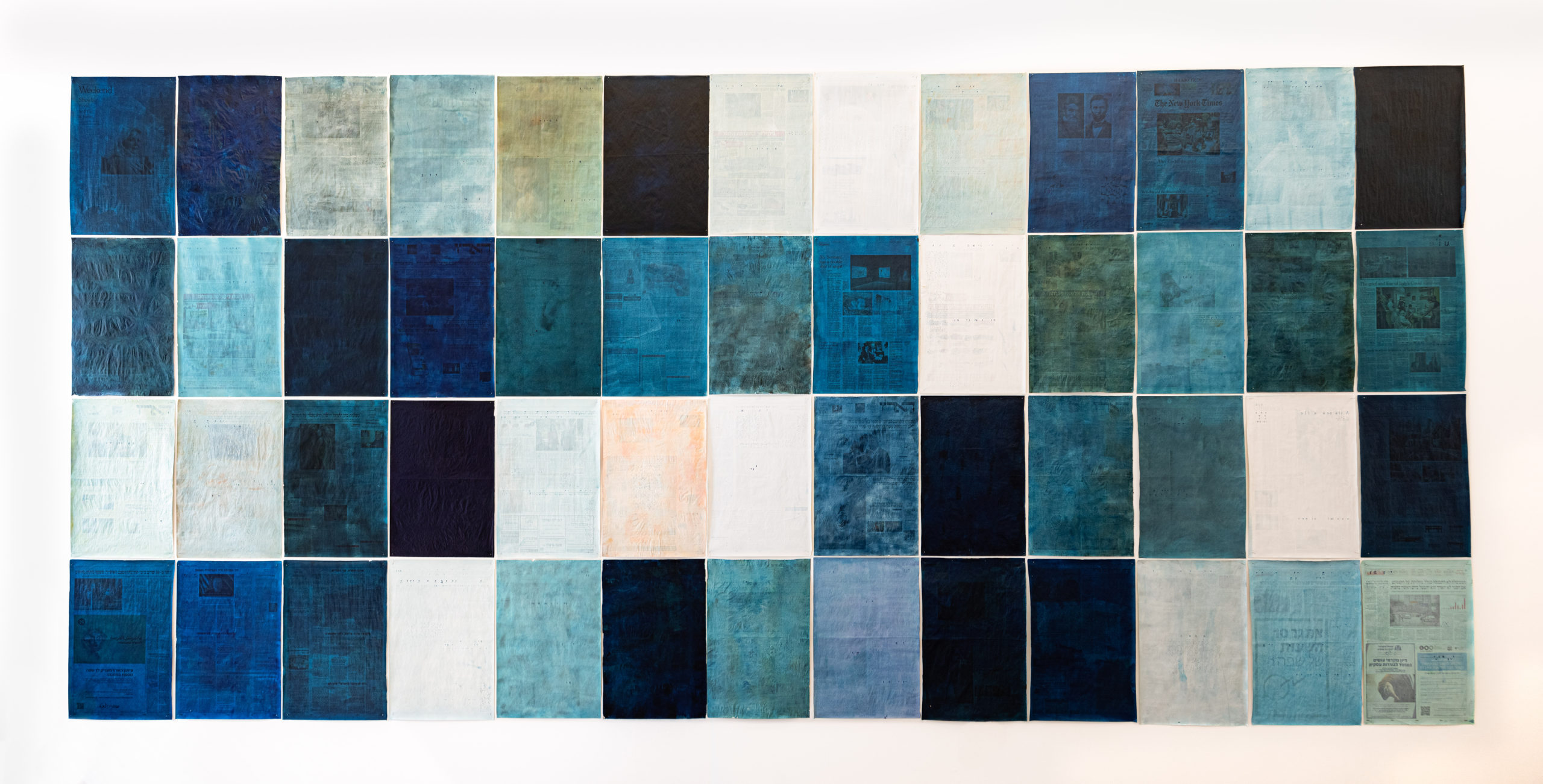
Oasis of Labor (Neve Amal), 2020-2021
52 pages from Ha’aretz and International edition of the NYTimes, ink, gesso, matt medium and blue carbon paper engraving.
21.5 x 22 in. (each)/ 55 x 36 cm. 88 x 189 in. / 223 x 480 cm (wall installation).

Tristeza, 2020. Ink on digital archival print, 13 x 18 1/2 in. / 33 x 47 cm.
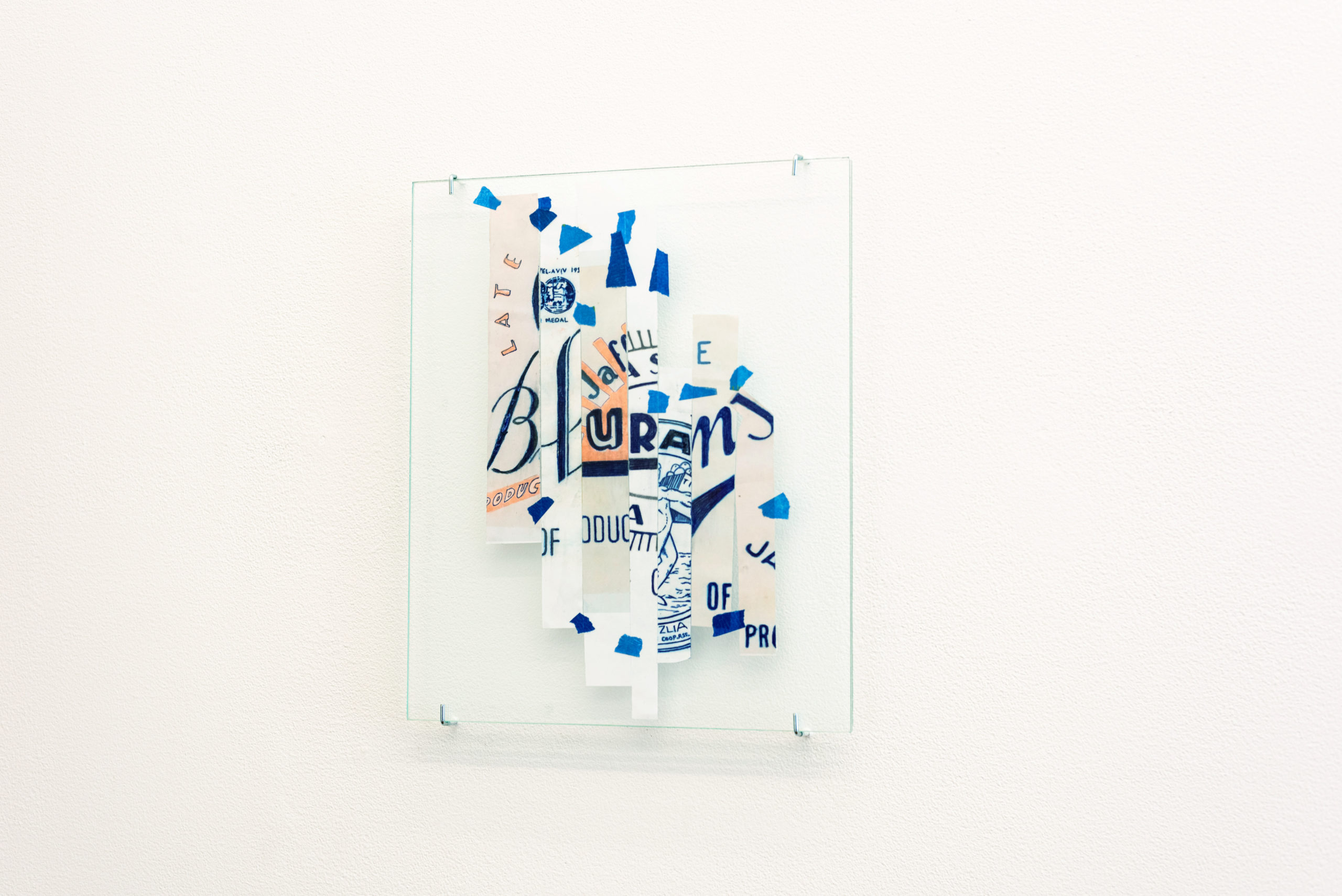
Untitled, 2021. inkjet print, blue tape and glass. 10 x 12 in.
